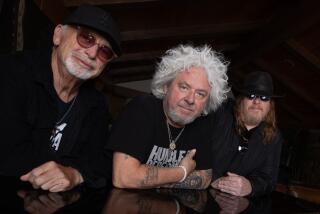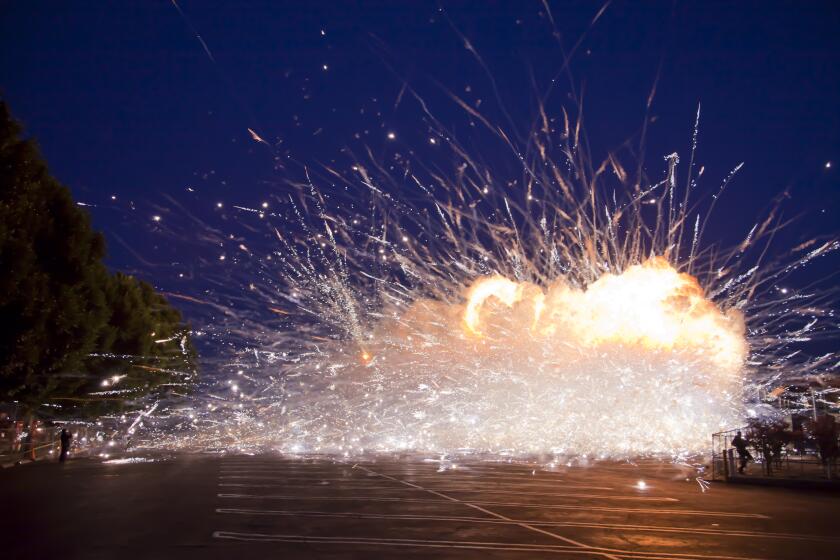MUSIC REVIEW : Choral Forces Honor Dvorak and Mozart
In addition to the bicentennial commemoration of Mozart’s death and the centennial celebration of Prokofiev’s birth, 1991 also marks the 150th anniversary of Dvorak’s birth. Anybody we’ve left out?
Nick Strimple combined observances for two of the three composers, leading strong but unsubtle performances of Mozart’s Mass in C minor and Act III of Dvorak’s obscure oratorio, “St. Ludmila,” Sunday at the Beverly Hills Presbyterian Church.
Strimple’s approach to Mozart’s Mass heavily favored the austere, Baroque-derived choruses. Less successful were the contrasting chamber-like accompaniments he provided for the soloists.
Strimple had the benefit of the lively acoustics of the building, which enhanced the big, bold, bright sound--strongly supported by the basses--made by the 52 voices of the combined church choir and the Choral Society of Southern California.
When the chorus was less than united in force, however, the singers often muddied inner lines, and Strimple then, also, beat heavy, four-square rhythms and accents.
In more intimate contexts, the orchestra of approximately 30 players provided weak and slurred support, even though they had opened the “Kyrie” with stylish, short-bowed phrasing.
Of the soloists, Barbara Hancock sang with a cool, hard, crystalline soprano, but she hit the high C in the “Incarnatus Est” with gleaming security.
Mezzo-soprano Cheryl Anne Roach assayed the florid “Laudamus Te,” usually sung by a soprano, with weighty tone and cautious agility. Neither woman could trill strongly.
Jeffrey Araluce was the pale tenor; Joel Pressman, the reedy baritone.
Strimple has been associated with Dvorak’s “St. Ludmila” since 1985, when he led what was then billed as the U.S. revival of the cantata. His enthusiasm and commitment to the piece were readily apparent.
Maybe that was the problem. The third act opens with a stirring chorus that embodies the composer’s unique style combining virility and vernal joy, here set with Handelian cadences.
This chorus and a few others merit big, rhetorical treatment. But Strimple overloaded the work with so many fortissimos boosted by trumpets and drums that these high points became redundant and wearying.
More to Read
The biggest entertainment stories
Get our big stories about Hollywood, film, television, music, arts, culture and more right in your inbox as soon as they publish.
You may occasionally receive promotional content from the Los Angeles Times.






